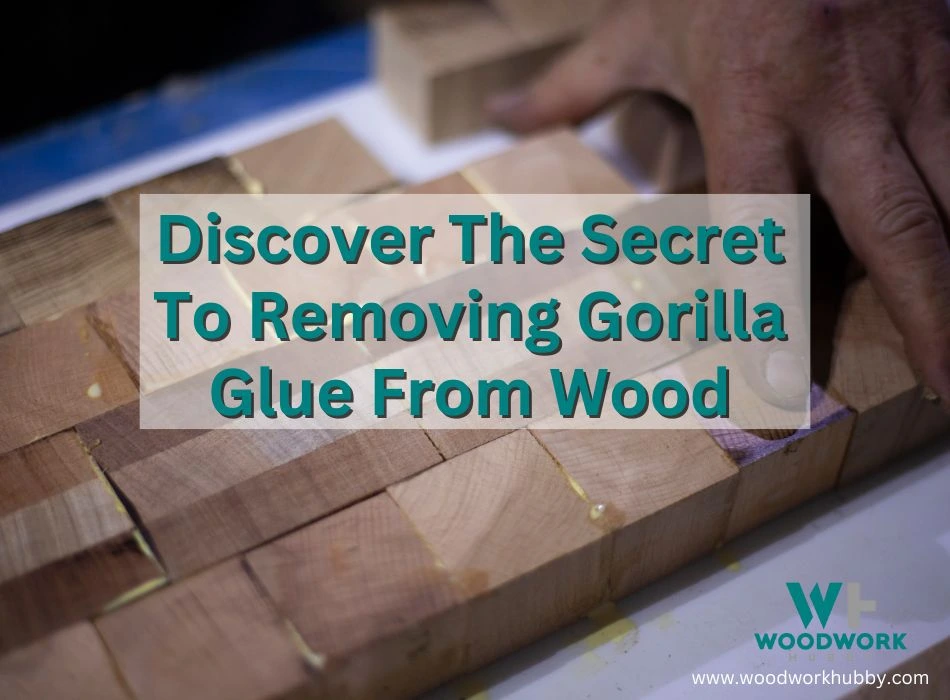Got trouble with Gorilla Glue sticking to your wooden furniture or craft? I’ve been there too! It’s a well-known fact that this adhesive is among the toughest to remove. But don’t worry, after extensive failures and trials, I’ve discovered some effective methods for removing this stubborn glue from wood.
Key Takeaways
- Acetone is a highly effective method for removing uncured Gorilla Glue from wood surfaces. Soak a paper towel in acetone and gently rub the glue until it dissolves.
- Sanding off the dried Gorilla Glue is another effective method. Start with 80-grit sandpaper and gradually increase pressure while moving in the same direction as the wood grain.
- Using razor blades can help scrape off both wet and dried Gorilla Glue from wood surfaces. Be careful not to dig too deep into the wood to avoid causing damage.
- Paint thinner and mineral spirits can also break down Gorilla Glue, making it easier to remove. Apply them directly onto the glue, wait a few minutes, then gently scrape or rub away the softened adhesive.
Methods for Removing Gorilla Glue from Wood
While these methods do work, I would always try to remove excess glue with a soft damp cloth while the glue is still wet.
There are several effective methods for removing Gorilla Glue from wood, including wiping with acetone, sanding off the glue, using razor blades, applying paint thinner or mineral spirits, trying soda and vinegar, using Goo Gone, and even removing it with nitromethane.
Wipe with Acetone
Here’s a trick I’ve picked up over the years for removing Gorilla Glue from wood: wipe it with Acetone. It’s a simple, yet incredibly effective technique. Here’s how you can do it:
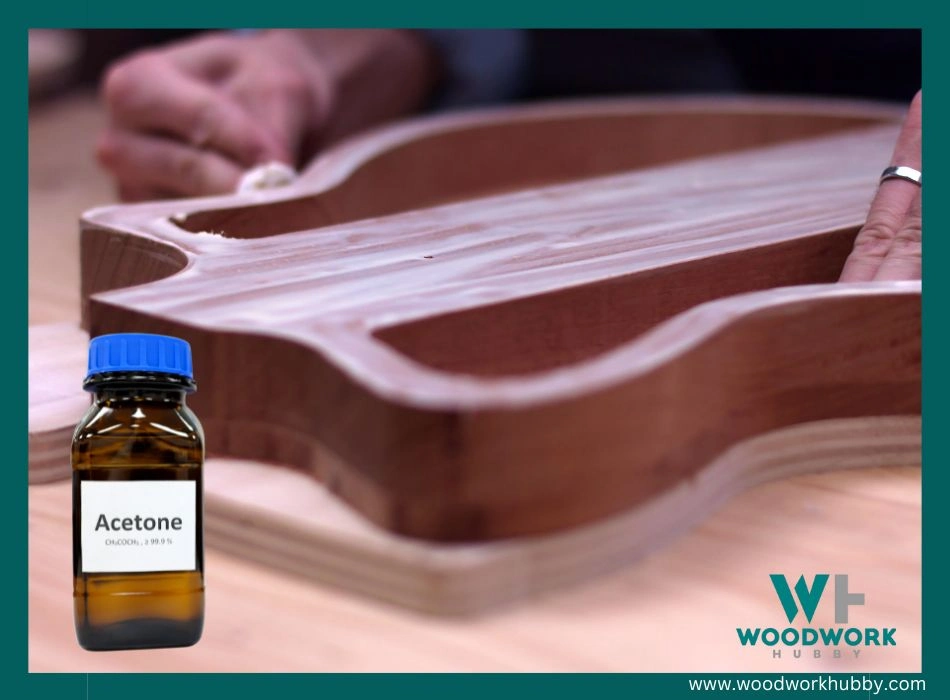
- Start by getting your hands on some acetone. You can find this liquid solvent in most hardware stores or online.
- Look for uncured gorilla glue on your wood surface. If it’s still wet, you’re in luck – acetone works best in this scenario.
- Soak a paper towel in acetone and start wiping the area where the glue is found. The beauty of acetone is its ability to dissolve the gorilla glue, making it much easier to wipe away.
- Keep patience while rubbing the paper towel over the wood surface and never rush through the process as haste could damage your wooden piece.
- As a bonus, acetone can also help if you accidentally get some of this stubborn adhesive on your skin or nails – simply use the same method as above!
- In case you run out of acetone, nail polish remover or rubbing alcohol serve as decent alternatives for removing uncured glue from nails.
- Even dried gorilla glue doesn’t stand up against acetone! Just apply more elbow grease during your wiping session and watch as that dried glue disappears into thin air!
- Acetone isn’t just good for wood either; it effectively removes gorilla glue from glass and metal surfaces too!
Sand off the glue
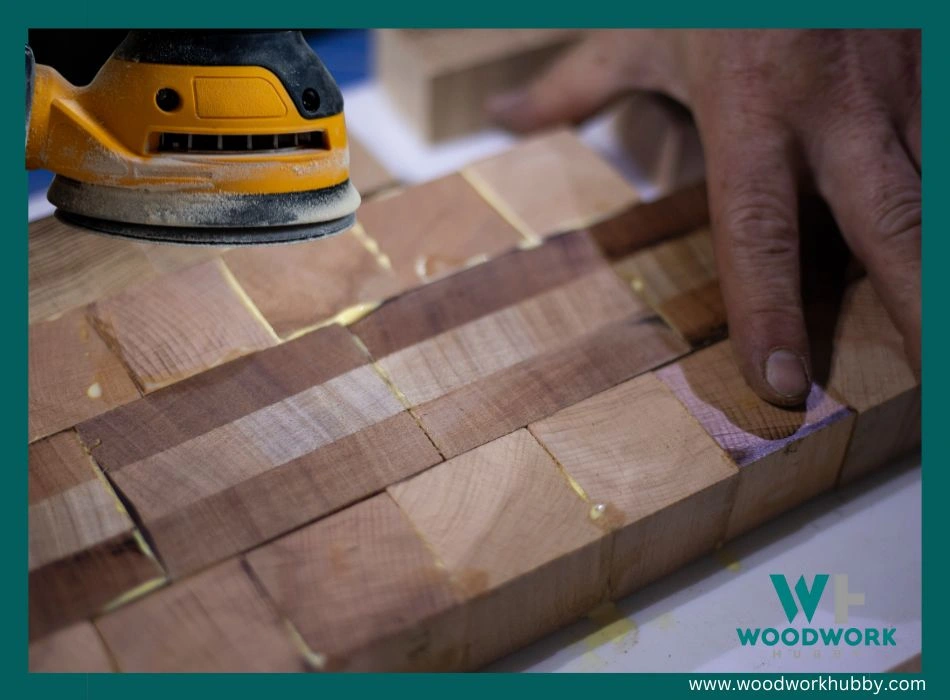
If you’re wondering how to remove Gorilla Glue from wood, sanding off the glue is one of the most effective methods. Here’s how you can tackle this:
Before removing wood glue you might like to know how long does Gorilla wood glue take to dry. I wrote this full article explaining the times.
Use Razor blades
I’ve found out that one of the reliable ways to remove Gorilla Glue from wood surfaces is by using razor blades. This method works effectively in scraping off both wet and dried glue. Here is a step-by-step guide on how to tackle this task:
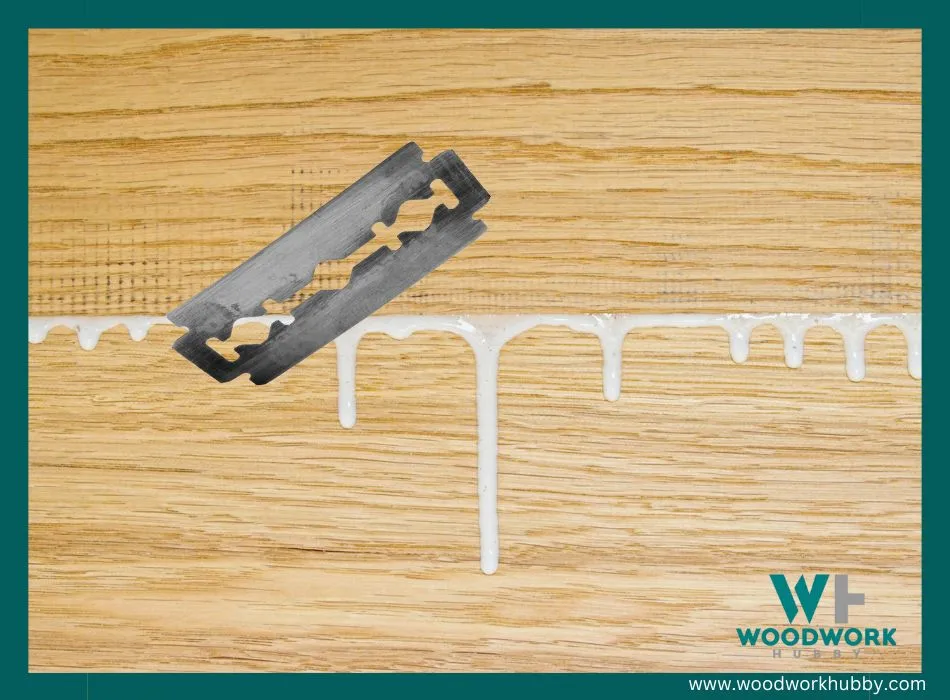
- Start by gently running the blade over the glued area to break up the surface of the glue.
- Apply gentle pressure, and make sure not to dig too deep into the wood to avoid causing damage.
- Continue scraping off as much glue as possible with the razor blade.
- Once most of the glue has been removed, you can use a fine grit sandpaper to clean up any residue left behind, while also smoothing out any rough areas created during scraping.
Apply Paint thinner
One effective method for removing Gorilla Glue from wood is to apply paint thinner. Paint thinner is a powerful adhesive remover that can break down the glue and make it easier to remove. Here’s how to use paint thinner to remove Gorilla Glue from wood surfaces:
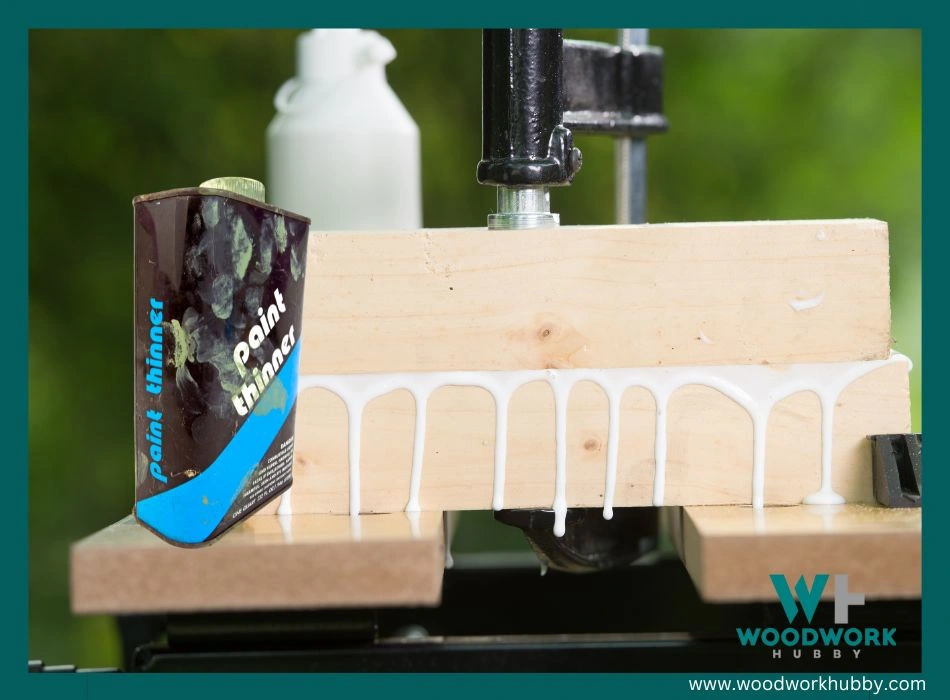
- Start by ventilating the area well, as paint thinner can emit strong fumes. Open windows or use fans to circulate fresh air in the space.
- Put on protective gloves and safety goggles before handling the paint thinner.
- Apply a small amount of paint thinner directly onto the Gorilla Glue on the wood surface.
- Allow the paint thinner to sit on the glue for a few minutes to penetrate and soften it.
- Gently scrape off the softened glue using a plastic scraper or putty knife. Be careful not to damage or scratch the wood surface while removing the glue.
- If there are any remaining traces of glue, repeat the process by applying more paint thinner and scraping again until all the Gorilla Glue is removed.
Use Mineral spirits
One effective method for removing Gorilla Glue from wood is to use mineral spirits. Here are the steps to follow:
- Apply a small amount of mineral spirits directly onto the dried Gorilla Glue.
- Wait for a few minutes to allow the mineral spirits to penetrate and soften the adhesive.
- Use a clean cloth or sponge to gently rub the area, applying slight pressure.
- Continue rubbing until the Gorilla Glue starts to lift off the wood surface.
- If necessary, repeat this process until all of the glue residue is removed.
Try Soda & vinegar
One method that can be effective in removing Gorilla Glue from wood is by using a combination of soda and vinegar. Here’s how you can try this method:
- Mix equal parts soda and vinegar in a bowl or container.
- Apply the mixture directly onto the Gorilla Glue on the wood surface.
- Let it sit for a few minutes to allow the acidic properties of the vinegar and the carbonation from the soda to break down the glue.
- Gently scrub the area with a soft cloth or brush to help loosen the adhesive.
- Rinse the wood surface with warm water to remove any residue.
Use Goo gone
One method for removing Gorilla Glue from wood is by using Goo gone. This effective adhesive remover can help dissolve the glue and make it easier to remove. Here’s how you can use Goo gone to remove Gorilla Glue from wood:
- Apply Goo gone directly onto the affected area of the wood.
- Let the Goo gone sit on the glue for a few minutes to penetrate and break down the adhesive.
- Use a soft cloth or sponge to gently scrub the area, working in circular motions.
- As you scrub, you’ll start to see the Gorilla Glue loosening and coming off of the wood surface.
- Continue scrubbing until all of the glue has been removed.
- Once the glue is gone, use a clean cloth dampened with warm water to wipe away any residue left behind by the Goo gone.
Remove gorilla glue with Nitromethane
To remove gorilla glue from wood, one effective method is to use nitromethane. Nitromethane is a strong solvent that can dissolve the adhesive properties of the glue, making it easier to remove. Here are the steps in using nitromethane to remove gorilla glue from wood:
- Start by applying a small amount of nitromethane directly onto the gorilla glue residue.
- Allow the nitromethane to sit on the glue for a few minutes to penetrate and break down the adhesive.
- Gently scrape off the softened glue using a plastic scraper or putty knife.
- If there are any remaining bits of glue, repeat the process by applying more nitromethane and scraping until all traces of gorilla glue are gone.
Tips and Tricks for Successful Removal
To clean up wet Gorilla Glue, start by wiping off as much of the excess glue as possible with a disposable cloth or paper towel. Then, dampen another cloth with acetone or nail polish remover and gently rub the glue until it softens and can be wiped away.
For dried Gorilla Glue, try scraping it off with a blunt tool like a knife or sanding it down carefully to avoid damaging the wood surface.
Steps for cleaning up wet glue
When dealing with wet glue spills, it’s important to act quickly to prevent further issues. Here are some easy steps for cleaning up wet glue:
- Gather necessary materials: You will need a damp cloth or paper towel, warm soapy water, and a scraper or blunt tool.
- Blot excess glue: Use a damp cloth or paper towel to blot the wet glue gently. Avoid spreading the glue further by using a blotting motion.
- Dilute the glue: Dip the cloth or sponge in warm soapy water and gently rub the affected area. This will help dilute the adhesive and make it easier to remove.
- Scrape off the glue: Once the glue has been diluted, use a scraper or blunt tool to carefully scrape off any remaining adhesive. Be gentle to avoid damaging the wood surface.
- Rinse and dry: After removing as much of the glue as possible, rinse the area with clean water and pat dry with a clean cloth.
Techniques for rubbing off dry glue
Removing dry glue from wood can be a challenge, but with the right techniques, it can be done successfully. Here are some effective methods for rubbing off dry glue from wood:
- Use a paper towel: Start by moistening a paper towel with warm water. Gently rub the dry glue in circular motions, applying light pressure. The moisture will help soften the glue, making it easier to remove.
- Apply heat: If the glue is particularly stubborn, you can try applying heat to loosen it. Use a hairdryer or heat gun on a low setting and direct the heat towards the dried glue. As it warms up, you can use a paper towel or cloth to rub off the softened adhesive.
- Try vinegar: Vinegar is known for its adhesive-breaking properties. Dampen a cloth or sponge with white vinegar and apply it to the dried glue. Let it sit for a few minutes to allow the vinegar to penetrate the adhesive. Then, gently rub the area in circular motions until the glue starts to lift.
- Use rubbing alcohol: Moisten a cotton ball or cloth with rubbing alcohol and apply it to the dried glue. Let it sit for a few minutes to allow the alcohol to break down the adhesive. Then, use gentle rubbing motions to remove the softened glue from the wood surface.
- Utilize vegetable oil: Apply a small amount of vegetable oil onto a clean cloth and rub it onto the dried glue. Allow it to sit for several minutes before gently rubbing away at the adhesive using circular motions.
Expert Q&A for additional advice
I reached out to some experts in the field for their additional advice on removing Gorilla Glue from wood. Here’s what they had to say:
- Use a heat gun: Apply heat to the dried Gorilla Glue with a heat gun on the lowest setting. This will soften the glue, making it easier to scrape off with a razor blade or putty knife.
- Try vinegar and water solution: Mix equal parts vinegar and water in a spray bottle and spray it onto the Gorilla Glue. Let it sit for a few minutes, then use a cloth or sponge to wipe away the softened glue.
- Utilize citrus-based solvents: Citrus-based solvents can be effective at breaking down adhesive residues, including Gorilla Glue. Apply the solvent directly to the glue and let it sit for a few minutes before wiping it away.
Precautions and Warnings
When using acetone or other solvents, make sure to work in a well-ventilated area and avoid inhaling the fumes.
Potential risks and hazards
As with any adhesive, it is important to be aware of the potential risks and hazards associated with Gorilla Glue. The chemical composition of Gorilla Glue can cause skin irritation, allergic reactions, serious eye irritation, and harm if inhaled.
It is crucial to take safety precautions when using this glue to minimize any potential risks. This includes wearing protective gloves and goggles, ensuring proper ventilation in the working area, and avoiding direct contact with the skin or eyes.
Additionally, it is important to keep Gorilla Glue out of reach of children and pets to prevent accidental ingestion or exposure. By following these precautions and being mindful of the potential risks involved, you can safely use Gorilla Glue for your woodworking projects without compromising your health or safety.
Things to avoid during the removal process
During the process of removing Gorilla Glue from wood, it is important to avoid using excessive force or abrasive tools that can damage the surface. Scratching or scraping too aggressively can result in scratches or gouges on the wood.
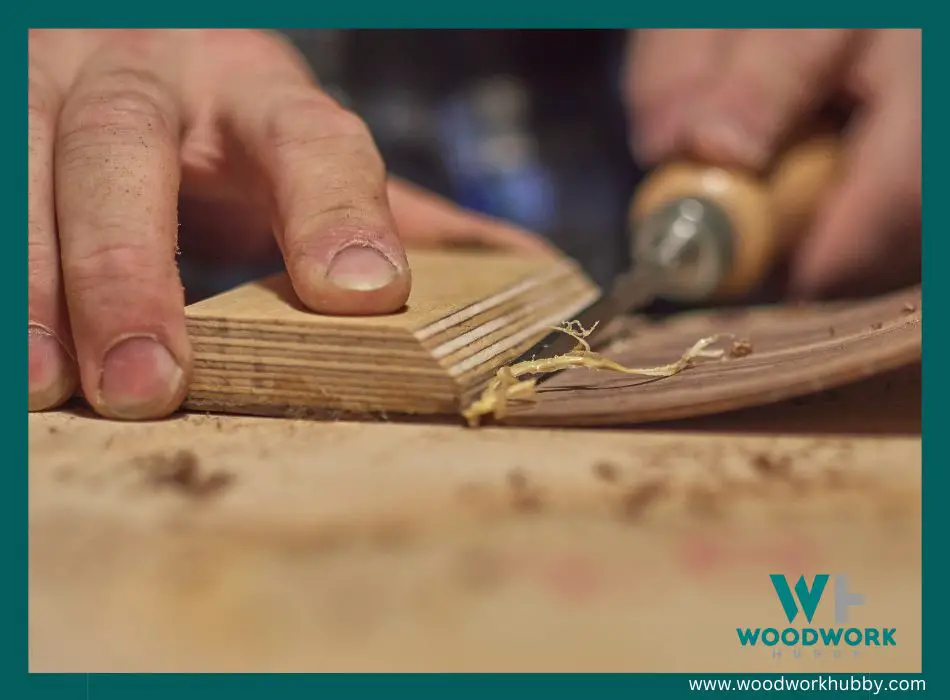
Additionally, avoid using harsh chemicals that may discolor or weaken the wood. It is also crucial to protect your skin by wearing gloves and avoiding direct contact with the glue as it can cause irritation and burns.
Lastly, take extra care when working with Gorilla Glue near open flames or heat sources, as it is highly flammable.
What will dissolve Gorilla glue
I have found that there are several solvents and liquids that can effectively dissolve Gorilla Glue from wood surfaces. Acetone is one of the most commonly used options, as it works well to break down the adhesive.
Denatured alcohol, lighter fluid, and hydrogen peroxide can also be effective alternatives to acetone for removing Gorilla Glue. These substances help to loosen the glue’s grip on the wood, making it easier to wipe away or scrape off.
It’s important to note that different solvents may work better on certain types of wood or in specific situations. For instance, if you’re dealing with a particularly stubborn or dried-on patch of Gorilla Glue, nitromethane can be incredibly effective at dissolving the adhesive.
This powerful chemical helps break down tough bonds and makes removal much easier.
When attempting to dissolve Gorilla Glue from wood surfaces, it’s crucial to exercise caution and follow safety guidelines. Always use these solvents in a well-ventilated area and avoid direct contact with your skin or eyes.
Additionally, take care not to damage the wood surface by using abrasive tools or excessive force during removal. With the right solvent and technique, you’ll be able to effectively dissolve and remove Gorilla Glue from wood without causing any harm.
How do you remove dried Gorilla glue
To remove dried Gorilla glue from wood, here are some effective methods you can try:
- Use sandpaper or a sanding block to gently rub off the dried glue. Start with a coarse grit and gradually switch to a finer grit for a smoother finish.
- Soak the glued area in warm soapy water for about 15 minutes. This can help soften the glue and make it easier to remove. Then, use a scraper or your fingernail to peel off the softened glue.
- Apply rubbing alcohol or acetone (nail polish remover) on a cloth and rub it over the dried glue. The alcohol or acetone will dissolve the adhesive, allowing you to wipe it away.
- If the above methods don’t work, try using white vinegar. Soak a cloth in vinegar and place it over the dried glue for at least an hour. The acid in vinegar can break down the glue, making it easier to scrape off.
- Another option is using heat to soften the dried glue. You can use a hairdryer on its highest setting or a heat gun set at a low temperature. Hold the heat source close to the glue and slowly move it back and forth until the adhesive becomes soft enough to scrape off.
How do you remove Gorilla glue from wood without damaging it
When removing Gorilla Glue from wood, it is important to do so carefully to avoid causing any damage. Here are some effective methods to remove the glue without harming the wood:
- Wipe with acetone or nail polish remover: Acetone is a commonly used solvent that can dissolve Gorilla Glue. Dampen a cloth or cotton ball with acetone or nail polish remover (which often contains acetone) and gently rub the glue until it starts to loosen.
- Use razor blades or a knife: If the glue has dried and cannot be easily wiped off, you may need to use mechanical means. Carefully scrape off the dried glue using a razor blade or knife. Be sure to do this gently so as not to damage the wood surface.
- Sand off the glue: Another method for removing dried Gorilla Glue is by sanding it. Use sandpaper or an electric sander on low speed to gradually remove the dried glue from the wood. Start with a coarse-grit sandpaper and switch to finer grits as needed.
- Try vinegar: Vinegar can be used as a milder alternative for removing Gorilla Glue residue from wood. Soak a cloth in vinegar and place it over the glued area for several minutes. The vinegar will help soften the glue, making it easier to wipe away.
- Use Goo Gone: Goo Gone is a commercial adhesive remover that can effectively remove Gorilla Glue without damaging the wood surface. Apply Goo Gone directly onto the glued area, let it sit for a few minutes, then wipe away with a cloth.
- Remove residue with mineral spirits: If there is any leftover residue after removing the majority of the Gorilla Glue, you can use mineral spirits to clean it off. Apply mineral spirits onto a cloth and gently rub at the residue until it comes off.
Does WD 40 remove Gorilla glue
WD-40 is a versatile product that can be used for many purposes, but when it comes to removing Gorilla Glue from wood, it may not be the most effective solution. While WD-40 can loosen bolts and screws, remove adhesives, and clean surfaces, its chemical composition may not be strong enough to dissolve the polyurethane-based adhesive in Gorilla Glue.
To remove Gorilla Glue from wood without damaging it, there are other methods you can try. Rubbing alcohol, vinegar, or even WD-40 itself can be applied to a clean cloth and vigorously scrubbed onto the glue.
PRO TIP! Don’t use WD-40 even if it does remove the glue. It will leave an oily stain on your timber that is hard to remove.
This helps to break down the adhesive bonds and make it easier to remove.
Alternatively, you can spray WD-40 on the Gorilla Glue and allow it to penetrate the adhesive before scraping it off with a plastic card or spoon. If there is any residue left behind after removing the majority of the glue, soaking it in rubbing alcohol, acetone (nail polish remover), or vinegar can help dissolve and remove it completely.
While WD-40 may not be your go-to solution for removing Gorilla Glue from wood, there are still plenty of effective methods you can try. It’s always important to test any product or method on a small inconspicuous area first to ensure that it doesn’t damage or discolor your wooden surface.
Conclusion – How To Remove Gorilla Glue From Wood
In conclusion, removing Gorilla Glue from wood may seem like a daunting task, but with the right techniques and products, it can be done effectively. From using acetone to sanding off the glue or even trying household solutions like vinegar, there are various methods to choose from.
Just remember to take precautions and follow expert advice to ensure successful removal without damaging your wood surfaces. So next time you find yourself dealing with unsightly glue residue on wood, don’t fret – now you know the secret to getting rid of it!
FAQs
1. How do I remove Gorilla Glue from wood?
To remove Gorilla Glue from wood, you can try soaking the affected area with warm soapy water and gently scraping off the glue with a plastic scraper or credit card. If that doesn’t work, you can also use acetone or nail polish remover on a cotton ball to dissolve the glue.
2. Can I sand off Gorilla Glue from wood?
Sanding may not be effective for removing dried Gorilla Glue from wood as it is a strong adhesive. It’s best to try other methods such as using warm soapy water or solvents like acetone before attempting to sand off the glue.
3. Will using heat help in removing Gorilla Glue from wood?
Heat can soften cured Gorilla Glue, making it easier to scrape off. You can try using a hairdryer or heat gun to apply gentle heat to the glued area before attempting to remove the glue.
4. Is there any specific product designed for removing Gorilla Glue from wood?
Gorilla also offers an adhesive remover specifically designed for removing their own products, including Gorilla Glue, from various surfaces including wood. This adhesive remover may be worth trying if other methods are unsuccessful in removing the glued residue.

